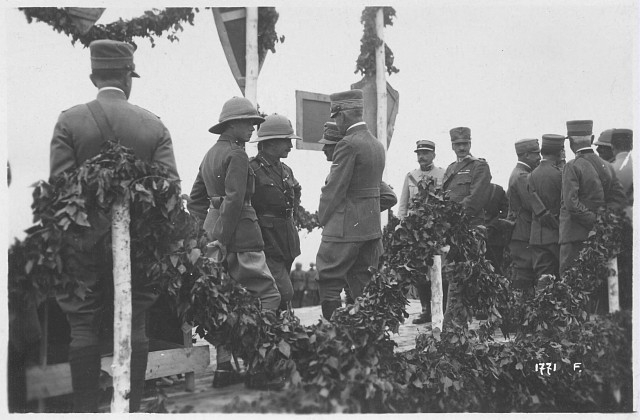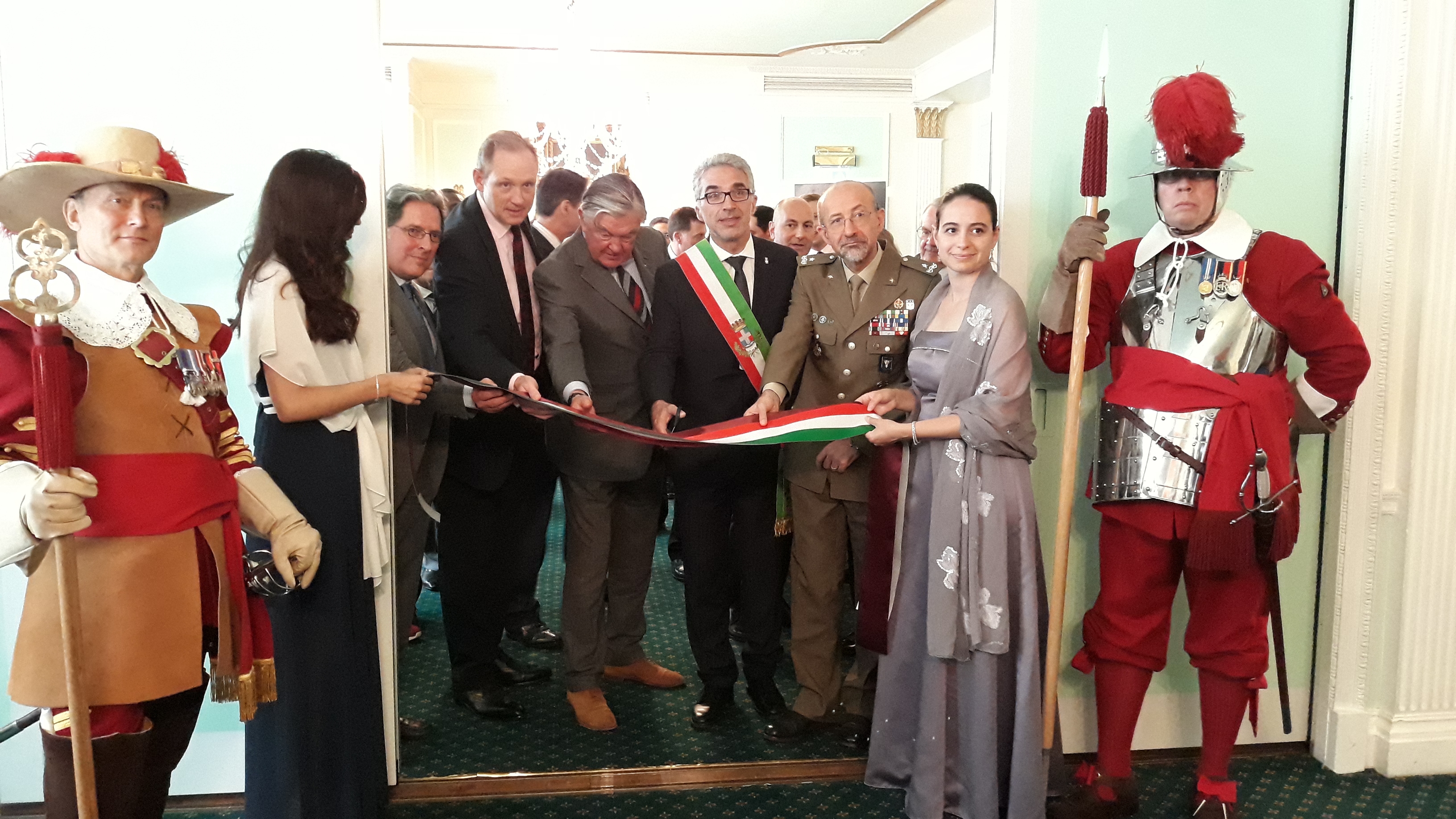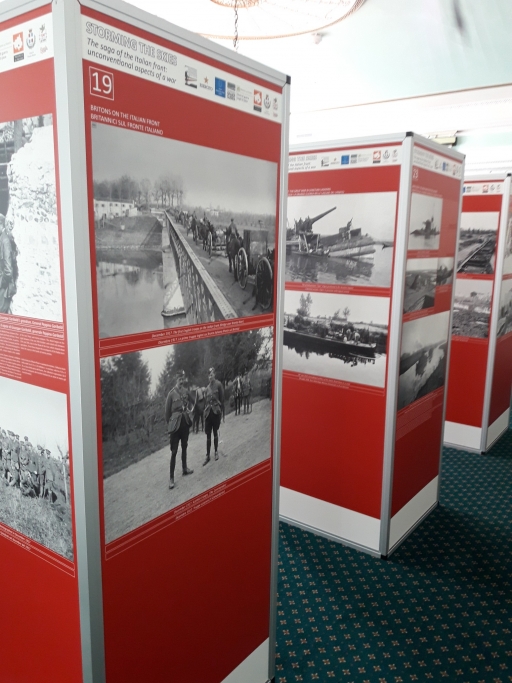Centenary News toured an exhibition of photographs at the Army & Navy Club in London, offering a rare glimpse in the UK of the Great War campaigns on the Italian Front. The 100 images – displayed from August 2 to August 31 – were drawn from the Luigi Marzocchi Collection of the Museo della Battaglia di Vittorio Veneto. Luigi Marzocchi was the Royal Italian Army’s official photographer.
The scenes captured here range from the snowy wastes of the Alps, where fighting at altitude posed extraordinary challenges, to the sultriness of the Venetian lagoon.
Of particular interest to British eyes will be the deployment of Allied forces to Northern Italy in late 1917, and a visit by the Prince of Wales in the last summer of the First World War.
After Italy’s defeat at Caporetto in October 1917, the armies of the Central Powers thrust towards the cities of the Veneto, prompting fears of a collapse. Britain and France responded by sending troops and aircraft to reinforce their ally.

HRH The Prince of Wales – later King Edward VIII – with Italian and French officers in July 1918 (Photo: Luigi Marzocchi Collection, Museo della Battaglia di Vittorio Veneto)
But what really strikes you about this exhibition is its portrayal of the fighting in the mountains. This was the La Guerra Bianca (The White War), where avalanches and fatigue presented as much of a threat as enemy action.
Italy and Austria-Hungary faced each other on a front line strung across the Alps. The dangers were compounded by the exceptionally cold winters of 1916 and 1917, when temperatures fell to minus 42 degrees celsius.
Peaks
As the photos reveal, everything the troops needed – from water, to munitions and even kit-built barrack huts – had to be carried up the jagged peaks of the Trentino, using dogs, mules, manpower and a network of cableways.
It was the writer HG Wells who used the phrase ‘Storming the Skies’ to describe a campaign fought at altitudes of more than 3,000 metres.
The War of the Worlds author was among a number of celebrated British writers, also including Rudyard Kipling and Sir Arthur Conan Doyle, who visited the Italian Front at the invitation of the British Ambassador of the day, Sir James Rennell Rodd. Seeking to counter concern that ‘Anglo-Saxon public opinion did not understand the scale of effort that the Kingdom of Italy was making’, Rodd wanted their prose to convey the drama of what was happening on the Italian battlefields.
As the First World War Centenary draws to a close, this touring exhibition of photographs is another timely reminder of those sacrifices. In October, Italy will be holding commemorations to mark the 100th anniversary of its final battle against Austria-Hungary at Vittorio Veneto in 1918.
 The opening of ‘Storming the Skies’. Pictured (from left) are Fabrizio Colaceci – First Counsellor, Italian Embassy, London; Major Paul Skelton-Stroud – Army & Navy Club, House Committee Member of Libraries, Archives, Arts & Artefacts; Roberto Tonon – Mayor of Vittorio Veneto; and Brigadier General Giovanni Gagliano – Defence Attache, Italian Embassy, London (Photo © Army & Navy Club)
The opening of ‘Storming the Skies’. Pictured (from left) are Fabrizio Colaceci – First Counsellor, Italian Embassy, London; Major Paul Skelton-Stroud – Army & Navy Club, House Committee Member of Libraries, Archives, Arts & Artefacts; Roberto Tonon – Mayor of Vittorio Veneto; and Brigadier General Giovanni Gagliano – Defence Attache, Italian Embassy, London (Photo © Army & Navy Club)
‘Storming the Skies’ was at the Army & Navy Club, London SW1, until 31 August 2018. Honouring all soldiers who fought in the Great War, the exhibition is dedicated to Brandolino Brandolini d’Adda, the only member of the Parliament of the Kingdom of Italy to be killed in action. He represented Vittorio (now Vittorio Veneto).
Also in Centenary News:
The Battle of the Piave River – Austria Hungary’s last offensive in Italy, June 1918.
Images courtesy of Luigi Marzocchi Collection, Museo della Battaglia di Vittorio Veneto (Prince of Wales with officers); Army & Navy Club, London (exhibition)
Posted by: CN Editorial Team
